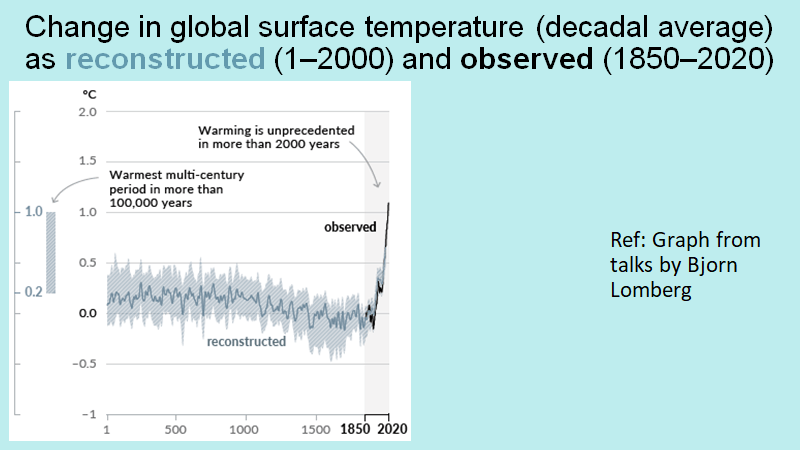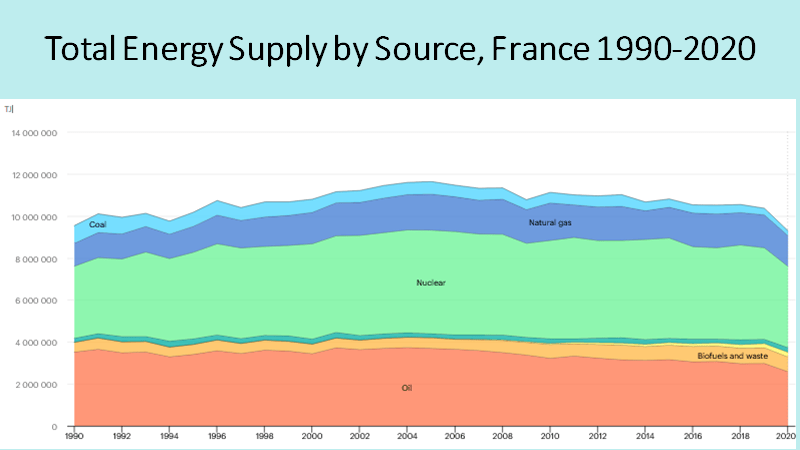
Why are we planning on decarbonising our world? Well, there are lots of reasons including the chance for some entities to make lots of money. The main reason is illustrated below:



How are we doing? Well, I am sure that I saw graphs for Australia showing that our methane and nitrous oxide levels were coming down and I put the methane reduction down to the reduction in our cattle and sheep numbers over the last decade or so. I cannot find my reference to those graphs despite my attempts at filing the information I have read in the last few months. The recent data for methane emissions show that our levels are rising (IEA Methane Tracker). I assume that this is probably due to fugitive emissions from the Queensland newly developed gas fields.
I must apologise, as I gave the wrong impression at the first presentation of this information at U3A in Atherton. I did not put this information up on the screen, it was only verbal but some of the attendees will remember my statement about Australia’s methane and nitrous oxide levels coming down.
One of the difficulties I have found when preparing my talks is a disparity in numbers between one source and another. However, it is clear that on a per capita basis, Australia emits some of the highest levels of CO2 and methane. Methane is emitted from wetlands and in quite substantial amounts. Worldwide, the fossil fuel industry seems to be working hard to control fugitive emissions and flaring as shown on the slide below. A few more years of data will clarify the level of methane emission as the flattening of the curve may be due in part to restricted travel during the COVID epidemic. Methane is emitted from wetlands and in quite substantial amounts.

The next few graphs come from the International Energy Agency (IEA) website https://www.iea.org/data-and-statistics. It is obvious that the bulk of worldwide CO2 emissions arise from the use of the fossil fuels coal, gas and oil. Gas produces about half the CO2 compared to coal for the generation of the same amount of energy. All the fossil fuels are valuable commodities in their own right for the manufacture of many goods we take for granted in our modern lives. They form the feedstock for so many chemicals, and they are a finite resource. It is such a waste when we just burn them to produce energy. Coal is still needed for the production of steel and a substantial proportion of Australia’s coal exports are used for this purpose. Recent technologies such as the use of hydrogen for steelmaking offer hope for the future.


Nuclear power plants have been producing a steady supply of electricity for over 30 years, but nuclear power has not been used to supply energy for other purposes. Despite the rapidly increasing construction of solar and wind power, again these energy sources are only used for the production of electricity. One of the obvious ways to decarbonise our energy, is to use electricity as a replacement for the production of heat and for transportation. Some public transportation systems around the world have always been electric. Electric trucks have been used in some transport sectors for nearly a century. China has been remarkably busy building high-speed, electric train networks this century.

Unfortunately, some of the EU countries such as France, Sweden and Germany have been closing down some of their nuclear power plants earlier than needed. France has had some of the cleanest electricity in the world at cheap prices, but the push for replacement by wind energy has taken them in the wrong direction. In the last few months, a number of EU countries have taken a U-turn and are planning more nuclear power plants. There has also been a real push to improve efficiency of electricity use within the EU. As can assumed from the graph below, even France produces significant levels of CO2 due to the use of oil for heating and transportation.


Despite the billions of dollars and euros spent on erection of new wind farms, the percentage of electricity produced through wind power has not increased in the OECD countries. Indeed, the use of coal has increased while gas which produces half the CO2 compared to coal has gone down.